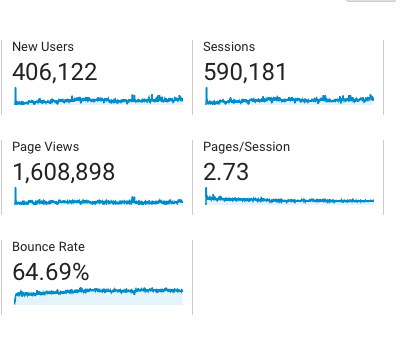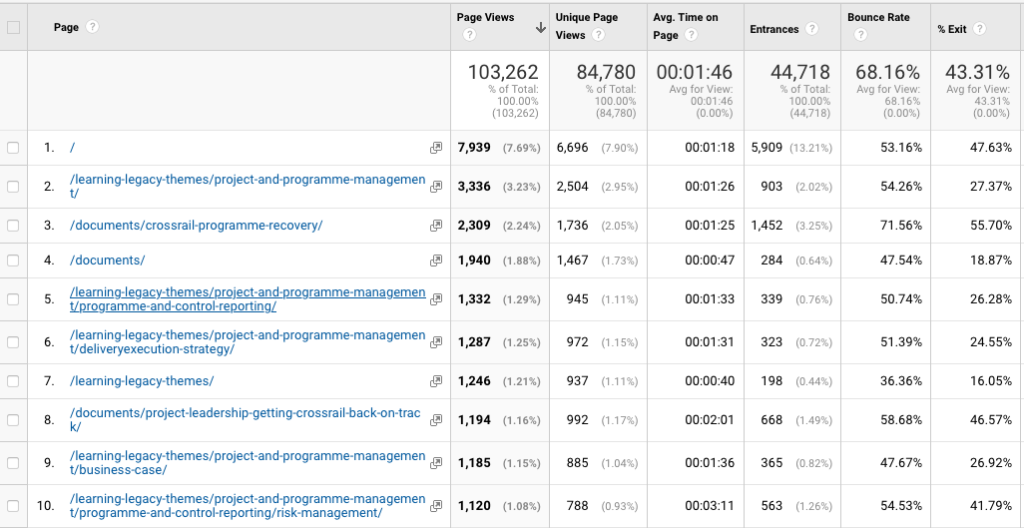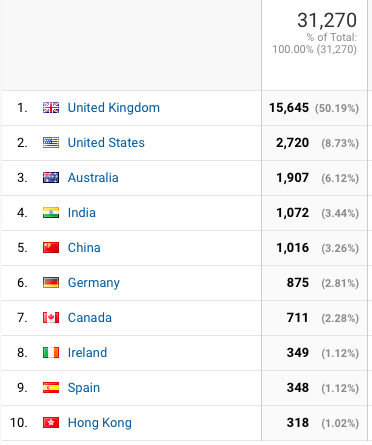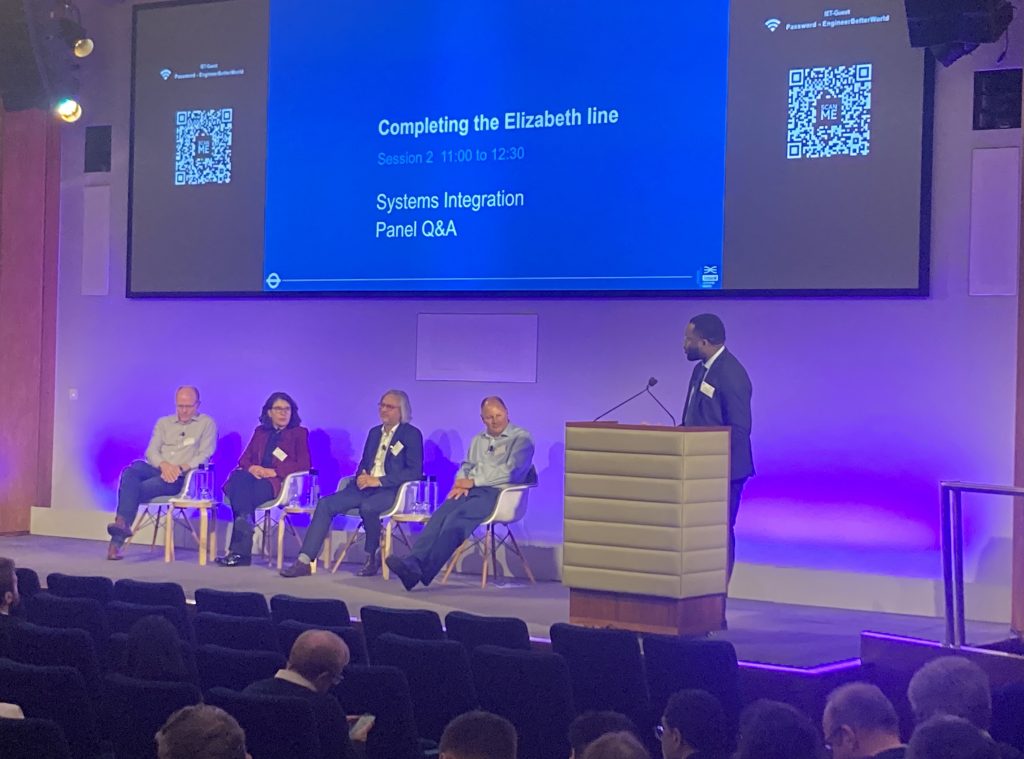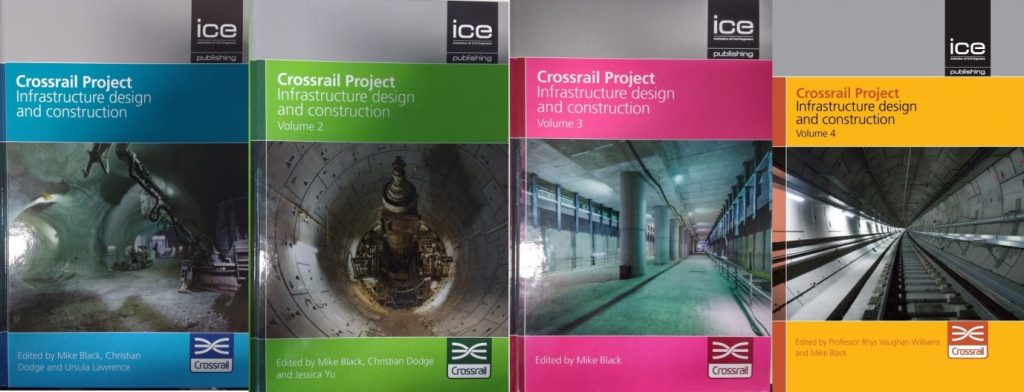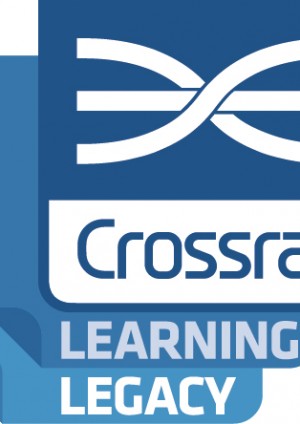
Managing the Crossrail Learning Legacy
Document
type: Technical Paper
Author:
Simon Bennett BEng(Hons) FCILT MCIPR AMICE
Publication
Date: 19/05/2023
-
Abstract
Crossrail ran a Learning Legacy programme to collate and disseminate the lessons from delivering the programme for the benefit of future major projects.
This micro-report explains how the learning legacy was set up and managed and provides some suggestions for improvement for future learning legacies.
-
Read the full document
Introduction
The Crossrail Learning Legacy Programme ran from mid 2015 to May 2023, with a hiatus between July 2018 and January 2020.
The establishment of a Learning Legacy was prompted by a recommendation to the DfT by the Public Accounts Committee that the experience of delivering the Crossrail programme be shared for the benefit of other taxpayer funded projects. This was enthusiastically taken up by the CRL Executive.
Setup, Governance and Processes
The Crossrail Executive Committee resolved to create a Learning Legacy Steering Group which would oversee the work. Karen Elson, who had delivered the London 2012 Olympics Delivery Learning Legacy, was retained to establish the Crossrail Learning Legacy programme and produced a Learning Legacy Plan which was adopted through the Learning Legacy Steering Group in June 2015.
The objective of the Learning Legacy was clearly stated:
To collate and share lessons learned, best practice and innovation from the Crossrail project for the benefit of future projects and programmes, aimed at raising the bar in industry and showcasing UK PLC.
Detail about the processes and procedures through which the Learning Legacy Programme was managed can be found in the Learning Legacy Plan. A key element was the decision to work in collaboration with partner organisations to ensure the value of the content and that it would be widely disseminated. This included professional institutions, successor major projects, and academic institutions. Representatives of these partners were invited to take part in Theme steering groups to give insight as to what learning was most relevant and required, and to assist in promoting and disseminating the content.
In July 2015 an internal appointment was made to manage the programme to take over from Karen Elson once the programme was launched publicly. A Learning Legacy Co-ordinator was also recruited to give a 2 person team for the majority of the life of the programme.
Due to the demobilisation of the Crossrail organisation ahead of the original opening date the Learning Legacy was closed in July 2018. The website remained live, with the intention that it would transfer to TfL. The new Crossrail leadership team appointed from late 2018 on decided to resurrect the learning legacy. The initial aim was to produce up to 20 further items covering the later phases of the project with a necessarily smaller team (0.6 FTE). A revised Learning Legacy Plan was approved by the Crossrail Board in January 2020.
Themes
The learning legacy content is arranged into 12 Themes which reflect functional areas of project delivery, each is further divided into appropriate sub-topics and the website is designed around this theme and topic area categorisation to make similar content easy to find. Steering groups were established for each theme and a Theme champion recruited from Crossrail Directors and senior managers to chair the groups and lead internal review of items produced.
Types of content
There were initially five types of content identified, differentiated in terms of the way they were produced. Templates were produced to give guidance to authors and help with managing approval. 4 other types were added later as they were recognised:
Document Type Description Template Micro Report Circa 800 word report Micro Report Guidelines Case Study c.3000 word report, with greater depth, externally peer reviewed Case Study Guidelines Technical Paper c.3000 word report but not subject to external peer review Technical Paper Guidelines Research Paper Academic work procured by Crossrail or based on Crossrail data or experience Research Summary Guidelines Good Practice Document Procedure, or other internal document produced by Crossrail, with appropriate commentary Good Practice Document Guidelines Journal Publication Papers written for journals by Crossrail team or based on Crossrail experience. Usually published as .pdf Not required Dataset Data, or collection of items containing data Good Practice Document template used for Summary Video Video content produced by Crossrail or partner organisations e.g. webinars. Not required Audio Audio content produced by Crossrail, partners, or external organisations e.g. podcasts Not required The partners were asked to identify reviewers for the peer review process for the Case Studies. All items were reviewed by the relevant Theme Champion and the External Affairs and Legal departments before publication.
Website
The Learning Legacy team procured a website development contract for a site separate to the main Crossrail website but part of the crossrail.co.uk domain. The web developers created a site with a WordPress content management system so that uploading items was simple and the site easy to navigate for visitors. The site and CMS have had numerous incremental improvements over the years but the initial design layout and structure was appropriate to stay the same for the 7 year life of the site.
The Learning Legacy programme and website was launched to the industry in February 2015 with an event supported by the Infrastructure and Projects Authority and other key partners. At launch there were 171 items on the site which had been produced over the previous 6 months. The team decided that a schedule of uploading twice a year would provide the right balance between regularly adding content and having an iterative process of production.
Content
544 content pages (documents) have been published on the Learning Legacy site, 69 of which were published since January 2020. However a number of these pages contain multiple items, such as suites of related good practice documents. The total items published to July 2018 was 681 (a 27.5% improvement over the target at the time of launch of 534) and the final total is 840.
Table 1 shows the number of items added in each tranche and Figure 2 the split of content by Theme.
Tranche Number of items February 2016 171 September 2016 158 March 2017 115 September 2017 70 March 2018 72 July 2018 95 2020-2023 159 Total 840 Table 1 – Learning Legacy items by Tranche
Feb 2016 Sept 2016 Mar 2017 Sept 2017 Mar 2018 July 2018 2020-2023 Total by Theme % of LL Content 1 Project and Programme Management 42 12 26 3 8 17 63 171 20% 2 Procurement, Commercial & Supply Chain 4 13 0 2 0 3 7 29 3% 3 Authorisation & Consents 9 0 0 32 4 3 1 49 6% 4 Land and Property 5 0 0 2 0 3 0 10 1% 5 Health and Safety 15 31 17 18 10 1 0 92 11% 6. Environment 39 38 15 7 6 8 2 115 14% 7. Engineering 37 25 41 1 41 37 83 265 32% 8. Operations 0 0 0 0 0 2 2 4 0.5% 9. Talent & Resources 7 28 2 0 2 3 0 42 5% 10. External Affairs 0 0 0 2 0 0 2 4 0.5% 11. Innovation 9 4 0 1 0 0 0 14 2% 12. Information Management & Technology 4 7 14 2 1 18 0 46 6% Total per tranche 171 158 115 70 72 95 159 840 Table 2 – Learning Legacy items by Theme
Usage
Usage of the website has been tracked using Google Analytics. Key statistics are given in the Figures below. In general usage is high on weekdays and low at weekends. Since launch the site has had over 1.6 million page views.
Significant spikes in visitors always accompanied key public announcements from or about the project.
When each new tranche was promoted via Crossrail social media there was a brief immediate increase in visits but more importantly each tranche led to a sustained overall increase.
Average session duration and number of pages per session was reasonably high demonstrating a good proportion of visitors were staying on the site and accessing content.
Figure 1 – Daily website visits 2023
Figure 2 – Website visit stats – 2016-2023
Figure 3 – Most popular pages – 2023
Figure 4 – Geographic spread of website visitors – 2023
Events
92 events were held or supported through the Learning Legacy (all but one during the 2015-2018 peiod). The majority involved CRL staff presenting to events organised by others as was envisaged through the partner model. The professional bodies which were most enthusiastic about dissemination favoured webinars as a delivery method and this was helpful as the recorded webinar could then also be added to the Learning Legacy.
In addition to the partner-led events the Learning Legacy team proposed a conference style event badged as Learning Legacy Meet the People. This took place in March 2017 at the Institution of Engineering Technology and was widely publicised to industry and government major project professionals.
A second event was held in April 2023, to disseminate the experience of the later stages of the programme and bringing the Elizabeth line into use. It was accompanied by a printed journal produced in partnership with the Association for Project Management.
Figure 5 – Completing the Elizabeth line event
Technical Papers Competition
A high proportion of the Learning Legacy content came from the Technical Papers Competition which had been instituted by the Engineering directorate from early in the Crossrail delivery phase, several years before the Learning Legacy programme was created. 6 annual competitions were held between 2012 and 2017 and a final competition in 2021. The papers were published in hard cover books by ICE Publishing.
This kind of intra-discipline learning could be considered a precursor of the more inter-disciplinary learning that the Learning Legacy provides, and it may be that in future Learning Legacies are the best way to publish these papers, rather than a hard copy book, though the promise of a book containing the authors work may be a significant incentive to contribute. The competition element undoubtedly contributed to the number of papers received, though these tended to be from the Engineering teams only even though the whole of Crossrail and the supply chain were invited to contribute. That may have been because that sort of writing up of experience is part of the culture in those disciplines.
Figure 6 – Technical Papers Books
User Satisfaction
A pop up survey was added to the Learning Legacy site to capture feedback from users. 240 responses were received (though not all responded to all questions).
- 92% of respondents felt it was ‘very easy’ or ‘easy’ to find the information they were looking for
- 84% felt the information was ‘very easy’ or ‘easy’ to understand
- 77% stated they would use the information in their own work
- 92% stated they would be likely to recommend the website to others
The professional bodies who were most engaged reported that the partnership was positive for them. The Association of Project Management reported that the Crossrail webinars were their best ever attended at the time and the Learning Legacy partnership raised their profile.
Many international projects have reported that they have used the website and congratulated Crossrail for providing such a useful resource. It may also have assisted with leads for Crossrail International.
Contributors themselves fed back that the author page, giving their professional biography and linking to the content they contributed has led in some cases to them being offered new roles after leaving Crossrail.
While supply chain organisations did not contribute much content themselves, two contractors arranged for their corporate learning portals to index the Learning Legacy site.
Major Project lessons learned requests
The Learning Legacy team took over responsibility for tracking lessons learned requests from external organisations which was previously managed by the Chief of Staff. The aim was to minimise the impact on CRL staff time by reviewing the requests and responses and publishing the material on the learning legacy site if practical so that they requestors could be directed to the website instead.
341 such requests were tracked as received but it is clear that many other contacts have been made directly to CRL staff who were not aware that they are supposed to report those communications to the team. The two procedures which govern lessons learned requests were as streamlined as they realistically could be, but communicating their existence internally effectively was a challenge and where someone from another organisation can pick up the phone to a former colleague in Crossrail they will do so and the communication will not be tracked.
In the majority of cases the requests were for information that Crossrail was not able to publish at the time, so the initial aim was not really fulfilled, nevertheless it is clear that the publication of learning legacy content stimulated requests for more detail from successor programmes and other industries.
Transition
Now that the Crossrail programme has closed the Learning Legacy website will be maintained online as a static site by TfL. The crossrail.co.uk domain has transferred to TfL and the Learning Legacy website URL is not planned to change.
It would not be practical to maintain the website as live indefinitely due to the higher hosting cost and the investment which would be required to ensure the site were to comply with the latest accessibility standards, which have moved on significantly since 2015.
The Major Projects Association has used its website to collate major project management knowledge. The Crossrail Learning Legacy content is indexed in the Learning Legacies tab of the Knowledge area of the MPA website.
Lessons learned and recommendations for future learning legacies
Allow for longer non peer-reviewed items
Some items could not be edited to 3000 words. In several cases the team decided that the value of the item outweighed the guidance to keep content to that length. Nevertheless the guidance is useful to ensure contributors try to be concise and the word count should be retained for items which require peer review.
Better engage the supply chain
Outside the Technical Papers Competition very few items were offered by the supply chain organisations, in particular main and sub-contractors. This could be due to wishing to retain intellectual property, or not seeing sufficient commercial benefit to being involved. Future learning legacies should consider other ways to incentivise contractor involvement.
Integrate with internal lessons learned process
Crossrail’s project management function had a lessons learned process but as it was focused on mobilisation of projects within the programme, it closed when there were no new contracts to mobilise, before the learning legacy work started. The lessons learned database was reviewed but the lessons had not been written with a view to wider publication and so were unsuitable for inclusion. While learning legacy is a distinct activity from lessons learned the two could be more closely linked, especially if the learning legacy work started from the inception of the programme.
Partners
Some professional institutions were less willing than others to promote the learning legacy, in some cases despite arranging with Crossrail staff to make presentations outside the learning legacy programme. This could be improved with closer co-ordination with those organisations over campaigns and event calendars.
Infrastructure and Projects Authority and National Infrastructure Commission
The IPA were enthusiastic about the programme and supported the launch, but have been less engaged than other partners. If the team had had more capacity Crossrail could have worked more closely with them, and with the National Infrastructure Commission, to integrate the Learning Legacy with government campaigns to improve infrastructure delivery in the UK.
Website
The decision to enter the items as web pages, rather than as pdf or other document types was made partly to make the content clear on mobile devices and partly to minimise the number of clicks to access an item. The ‘print’ option was added later and allows download of the page content for a document, but it would have been better to create an additional pdf of each document as well. This would have required additional resource. Future websites will also be able to benefit from advances in web accessibility provision and requirements which will enable content to be made more accessible.
The few suggestions for improvement from the user survey tended to be requests for a simple list of content, despite this being visible by clicking the ‘document list’ option from the Themes menu. The ratings function was useful to be able to highlight a variety of content on the front page but over time the high rated items became self-fulfilling and the variety reduced. Given that there was a suspicion that several ratings were being applied by the authors themselves and some incidents of sudden very high numbers of ratings which may have been by ‘bots’, it was eventually switched off in 2020. A future learning legacy should consider an alternative way of highlighting content, without resorting to requiring a login to access the site.
Co-ordination of lessons learned requests and other external contact
Anecdotally the team believes that there have been many instances of Crossrail staff responding to enquiries or making presentations to external organisations without informing the Learning Legacy team, or Crossrail’s External Affairs team. This is a pity because the presentations could have been promoted, and recorded and added to the Learning Legacy and the enquiries logged to provide intelligence on what information would be most helpful to publish. Higher profile promotion of the policies and procedures, and frequent reinforcement may have helped address this.
Video content
The recorded webinars were popular. If there had been more resource the team could have recorded video content, either as new items, or with authors presenting a summary of an item they contributed, this kind of content would have been easier to promote and probably more widely viewed.
Data
Much more project data was available, but for various reasons this could not be collated and published, at least during the time the learning legacy was in operation. Cost and Schedule data in particular would be extremely valuable to academics and to future programmes. Future programmes could use a Learning Legacy function to either publish, or work with Data Trusts to make this data available.
Events
While the partner-led events were very useful, the ‘Meet the People’ and ‘Completing the Elizabeth line’ conferences provided an opportunity for peers to speak to a range of Crossrail staff in one place and were very well received by attendees. It would have been useful to make these more frequent, which would also have built recognition over time.
Programme
While an impressive amount of content was published, the learning legacy programme began several years after the Crossrail programme began and already staff with key experience had moved on to other projects. Future Learning Legacies should begin collating content from the very start, including the development phase and should continue until delivery is complete and all lessons from handover and operation can be included. It would also be useful for the learning legacy to continue beyond project closure to enable the release of datasets which could not be published until after that point.
-
Document Links
-
Authors
Simon Bennett BEng(Hons) FCILT MCIPR AMICE - Crossrail Ltd
Simon is Head of Learning Legacy at Crossrail. A Civil Engineer, Transport Planner and Communications professional, he worked on the original 1990s Crossrail scheme for London Underground and in 2000 was seconded from TfL to Cross London Rail Links to work on developing the project and securing powers. He led the Consultation team which became the Petitions Negotiation team during the Bill process. During the construction phase he has been Head of Stakeholder Engagement and then Programme Community Relations Manager.
In 2015, Simon was appointed to lead the team responsible for the collation and dissemination of good practice, innovation and lessons learned from the Crossrail construction programme aimed at raising the bar in industry and showcasing UK PLC.

